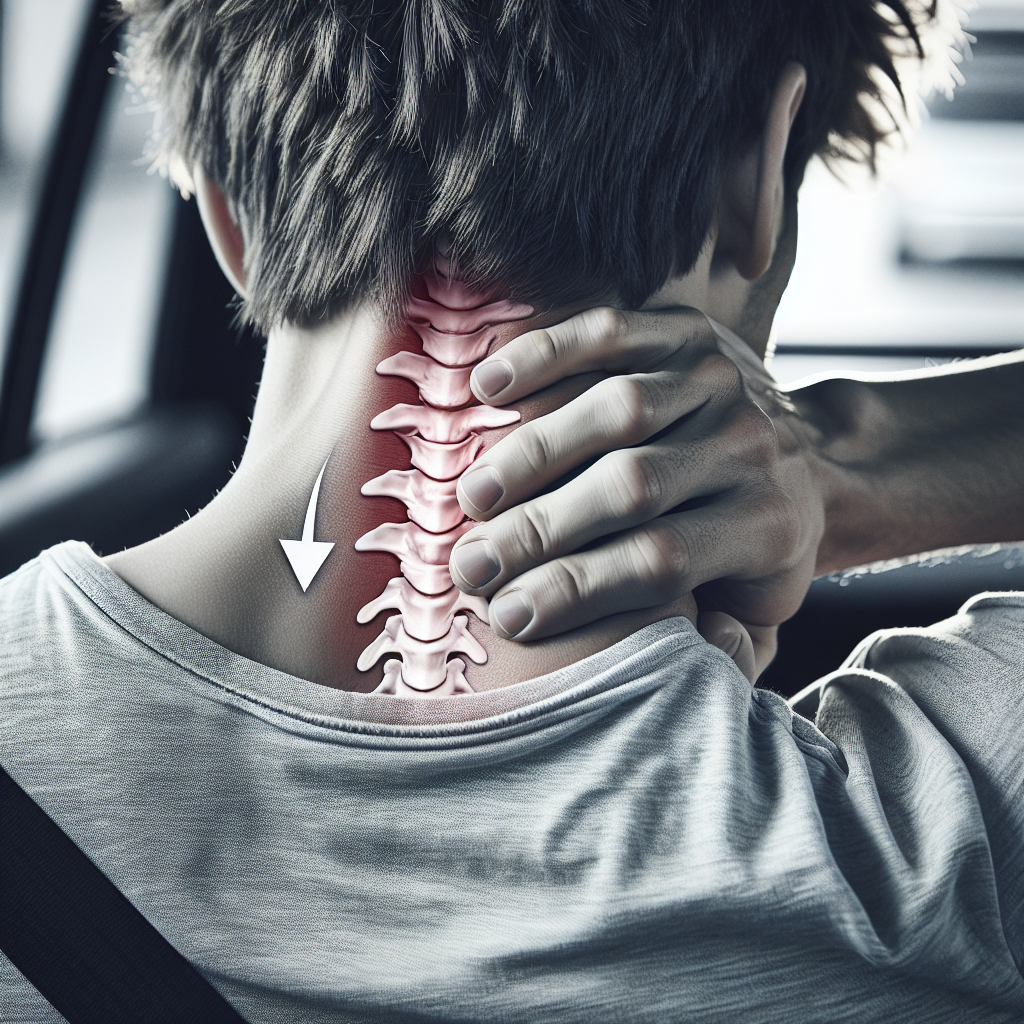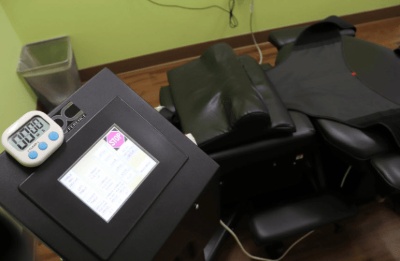Accidents can leave you with more than just physical pain. The financial burden of medical bills, including chiropractic care, can be overwhelming. But who pays for chiropractor after accident? The short version is you are, but some of the 3rd parties may pay for the treatment.
This guide aims to answer the question: who pays for chiropractor after an accident? We’ll delve into the intricacies of insurance coverage, car accident settlements with chiropractors, and how to handle a chiropractor bill after a car accident.
Understanding these aspects can help you navigate the often complex process of filing a chiropractor car accident claim. Whether you’re currently receiving chiropractic treatment or considering it, this guide will provide valuable insights.
Stay with us as we explore the financial aspects of chiropractic care after an accident.
Understanding Chiropractic Care Post-Accident
After an accident, chiropractic care can be a crucial component of recovery. Chiropractors focus on diagnosing and treating musculoskeletal problems, often caused by the impact of a collision.
These professionals use hands-on spinal manipulation and other techniques to restore mobility and relieve pain.
Many people find that chiropractic adjustments help alleviate discomfort associated with auto accident injuries. This type of treatment can lead to improved healing and overall wellbeing.
Common injuries that chiropractors treat after accidents include whiplash, sprains, strains, and soft tissue injuries.
In addition to these, chiropractors can also address back pain, neck pain, and headaches, which may arise from a collision.
Benefits of chiropractic care post-accident include:
- Non-invasive pain relief
- Improved mobility and flexibility
- Reduction of inflammation and muscle stiffness
- Accelerated recovery and healing
Seeking care promptly after an accident is crucial. Delaying treatment may lead to further complications or affect insurance claims. Taking swift action ensures your injuries are addressed effectively.
Insurance Coverage for Chiropractic Services
Navigating insurance coverage for chiropractic care after an accident can be complex. However, understanding how insurance works can significantly ease the process.
Typically, insurance coverage plays a significant role in managing chiropractic costs following a crash. Many auto insurance policies include provisions for medical care, which can encompass chiropractic services.
Personal Injury Protection (PIP) is a part of many auto policies (For Washington State, 10K and 35K are the most common). PIP can help cover medical expenses, including chiropractic care, without waiting for a determination of fault. Medical payments coverage (MedPay) is another option that may assist in covering these costs.
It is crucial to know the details of your specific insurance plan. Both PIP and MedPay can alleviate the burden of high out-of-pocket expenses, allowing you to focus on recovery.
Health insurance may also offer coverage for chiropractic services (in Washington State most insurance cover chiropractic care without a referral). It’s essential to verify the chiropractor’s network status with your health insurer. In-network providers may result in lower costs.
To summarize, consider these insurance elements for chiropractic care:
- Review your auto insurance for PIP and MedPay coverage. If your car insurance policy doesn’t include it, we strongly suggest adding the Highest PIP policy that is available to you.
- Check whether your health insurer covers chiropractic care
- Understand network restrictions and out-of-pocket costs
Each policy has different terms and conditions. Familiarizing yourself with the specifics will help you navigate the payment process for chiropractic treatment more effectively. Ensuring you have proper coverage is essential to avoid unexpected expenses and ensure your path to recovery is smooth.
The Role of Fault in Chiropractic Care Payment
Fault determination is vital when addressing chiropractic care payments after an accident. The party deemed responsible often bears financial responsibility, impacting how and who covers the chiropractic care costs.
In at-fault states, the driver responsible for the accident typically pays for damages, including medical expenses. If you’re at fault, your insurance may cover your chiropractic care through personal injury provisions, assuming such coverage exists. This is seen as a third-party payment, which can be more challenging to manage or find a provider willing to accept it.
Conversely, if another driver is at fault, you may file a third-party claim. This type of claim involves the at-fault party’s insurer and seeks compensation for expenses incurred, including chiropractic bills. It’s crucial to report the accident to your insurer even when pursuing a third-party claim.
However, dealing with another driver’s insurance can involve negotiations and require substantial documentation. This process may include providing evidence of the accident’s impact on your health.
No-fault states, however, simplify matters by having each driver’s insurance cover their medical expenses, regardless of fault. Understanding whether your state operates on an at-fault or no-fault basis is essential for predicting who will pay for your chiropractic treatment. Engage your insurance provider or a legal advisor to get clarity on how these rules apply to you.
Filing a Chiropractor Car Accident Claim
Filing a claim with your auto insurance company involves several critical steps. First, promptly report the accident to your insurer, as immediate notification can affect your claim’s outcome. After reporting, your insurer will guide you on the next steps in the claims process.
Documentation is a vital component of the claims process. Begin by gathering all relevant medical records, including bills and treatment plans from your chiropractor. These documents demonstrate the necessity of your care and the direct link to your accident injuries.
Additionally, it’s beneficial to maintain a personal injury journal. This journal can detail the progression of symptoms, the frequency of appointments, and the impact on your daily life. Such records provide valuable context and support during claim reviews.
Timeliness is crucial when seeking chiropractic care after an accident. Delays in treatment can raise questions about the seriousness of injuries and affect insurance payouts. Insurance companies often scrutinize delayed treatment with skepticism.
In cases where immediate care isn’t feasible, documenting the reasons for any delay is essential. For instance, waitlists or work schedules can sometimes cause unintended lags. Clear, detailed explanations can mitigate potential issues with your claim.
Lastly, always follow your chiropractor’s treatment plan and consistently attend appointments. Insurers view this adherence as a sign of serious intent and genuine need for treatment. These steps will help ensure a smoother claims process, increasing the chances of a favorable outcome.
Negotiating with Insurance and Legal Considerations
Dealing with insurance adjusters can be a delicate task. They are trained negotiators who aim to minimize the payout on claims. It’s important to provide clear, concise documentation of all medical treatments to bolster your case for coverage. We highly advise to consult a legal team.
Preparation is key when negotiating with insurers. Understand your policy thoroughly and highlight aspects that support your claim. Be ready to counter low settlement offers with evidence of necessary treatments.
In complex cases, especially those involving severe injuries or multiple parties, legal representation might be necessary. A personal injury attorney can guide you through the intricacies of insurance claims and ensure your rights are protected. Attorneys bring expertise in navigating negotiations and can often secure better settlement terms.
It’s also crucial to be aware of the statute of limitations in your state. This legal deadline restricts the time you have to file a claim. Filing late usually results in the claim being denied, regardless of its merits. Each state has different rules, so check these timelines early in the process.
Legal considerations can significantly impact the outcome of your claim. A proactive approach, combined with professional guidance, can enhance your position during negotiations. This strategy helps ensure you receive appropriate compensation for chiropractic services post-accident.
Car Accident Settlement with Chiropractor and Reimbursements
When negotiating with insurance companies, settlement offers are a crucial aspect to understand. Insurers often propose settlements to resolve claims quickly and reduce further liabilities. Sometimes, a verbal agreement made over a recorded line can be considered a binding contract. These offers may cover medical expenses, including chiropractic care.
Carefully evaluate any settlement proposal before accepting it. Ensure it addresses all current and future treatment costs. Consulting with a legal professional can be beneficial for interpreting the long-term implications of the offer.
Sometimes, individuals need to pay for chiropractic care out-of-pocket and seek reimbursement later. This situation often occurs when the insurance process is slow. Retain all receipts and records meticulously for future claims.
Lien-based treatment is another option when insurance settlements are delayed. Under this arrangement, chiropractors agree to treat patients now and receive payment once the insurance claim settles. This approach can ease financial pressure while waiting for resolution.
Reimbursements after a settlement can vary widely. The insurer may cover only part of the expenses, depending on policy terms. Understanding your agreement is vital to ensure you receive fair compensation for chiropractic services post-accident. With thorough documentation and careful planning, navigating settlements and reimbursements can become manageable.
Tips for Managing Chiropractor Expenses After an Accident
Handling chiropractor expenses post-accident efficiently requires thoughtful organization. Begin by keeping detailed records of every visit and related costs. Include invoices, payments made, and any insurance documentation for comprehensive records.
Understanding your insurance policy’s terms and conditions is crucial. Carefully review the policy details to know what expenses are covered. Pay attention to aspects like deductibles, co-pays, and coverage limits to avoid surprises.
If your claim for chiropractic care is denied, do not worry. There are ways to address this. Start by reviewing the denial letter to understand the insurer’s reasoning. This can provide insight into what documentation or information might be missing.
Prepare a list to keep your dispute process organized and on track:
- Gather all relevant medical documents.
- Consult with your chiropractor for supporting information.
- Submit any additional documentation requested by the insurer.
- Follow up regularly until the issue is resolved.
Clear communication with your insurer is important during this stage. Providing thorough information can help overturn a denial. A timely response to any requests from the insurer is critical for a successful resolution.
Finally, consider seeking professional advice if you’re unable to resolve the dispute independently. An attorney with experience in auto accident claims can offer valuable guidance. By taking these steps, you can better manage your chiropractic expenses and ensure you’re not left bearing unnecessary costs after an accident.
Conclusion and Next Steps
In the aftermath of an accident, understanding who pays for chiropractor services is crucial. This guide has explained insurance coverage, claim filing, and negotiation tips. Comprehending these points can ease the financial strain of treatment.
Remember, following through with chiropractic care and the claims process is vital. Timely actions can lead to better recovery outcomes and ensure fair compensation for expenses. Don’t neglect the importance of prompt and ongoing care.
Chiropractic treatment can be pivotal in your recovery journey. It not only aids physical healing but also supports your overall well-being. Equip yourself with knowledge, stay proactive, and prioritize your health as you navigate this process.







